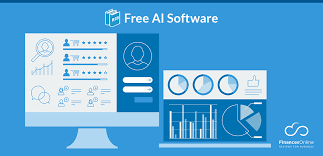With the proliferation of free AI apps across various platforms, users are presented with a vast array of options to choose from. However, discovering high-quality apps that meet their specific needs can be a daunting task. To aid users in this endeavor, it’s essential to understand the methods and criteria for discovering and evaluating the quality of free ai apps effectively.
1. App Stores and Marketplaces
App stores and marketplaces serve as primary platforms for discovering free AI apps. Users can explore app listings, browse categories, and search for apps using relevant keywords. Popular app stores such as the Apple App Store, Google Play Store, and Microsoft Store curate collections of top-rated and trending apps, making it easier for users to discover new and popular apps in various categories, including AI.
2. User Ratings and Reviews
User ratings and reviews provide valuable insights into the quality and performance of free AI apps. Users can evaluate apps based on ratings and read reviews from other users to gain an understanding of their experiences. High ratings and positive reviews often indicate that an app is reliable, user-friendly, and effective in delivering its intended functionality. Conversely, apps with low ratings or negative reviews may have performance issues, bugs, or usability problems that users should be cautious about.
3. Recommendations and Referrals
Word-of-mouth recommendations and referrals from friends, colleagues, or online communities can be invaluable in discovering quality free AI apps. Users can seek recommendations from trusted sources or participate in online forums, social media groups, or communities dedicated to technology, AI, or app reviews. Additionally, users can follow influencers, bloggers, or tech enthusiasts who specialize in app recommendations and reviews to stay informed about the latest and most promising apps in the AI space.
4. Developer Reputation and Track Record
The reputation and track record of the app developer or company behind a free AI app can also serve as indicators of quality and reliability. Users can research the developer’s history, previous projects, and contributions to the AI community to assess their expertise and credibility. Established developers with a track record of releasing high-quality apps and prioritizing user satisfaction are more likely to deliver reliable and trustworthy free AI apps.
5. Features and Functionality
Users should evaluate the features and functionality offered by free AI apps to ensure that they meet their specific needs and expectations. Key considerations include the app’s core functionality, user interface, ease of use, performance, and compatibility with devices or platforms. Users should look for apps that offer innovative features, intuitive interfaces, and seamless integration with other tools or services to maximize their utility and convenience.
6. Update Frequency and Support
Regular updates and ongoing support are essential factors in evaluating the quality of free AI apps. Users should assess the frequency and timeliness of app updates, as well as the responsiveness of developers to user feedback and support requests. Apps that receive frequent updates with bug fixes, performance improvements, and new features demonstrate a commitment to maintaining quality and addressing user needs, enhancing the overall user experience and longevity of the app.
Conclusion
In conclusion, discovering and evaluating the quality of free AI apps requires a combination of methods and criteria to ensure informed decision-making. By leveraging app stores, user ratings, recommendations, developer reputation, features, and support, users can identify high-quality apps that meet their specific needs and expectations. With diligence and research, users can discover hidden gems and avoid potential pitfalls when exploring the vast landscape of free AI apps, ultimately maximizing their value and utility in enhancing productivity, creativity, and convenience.

